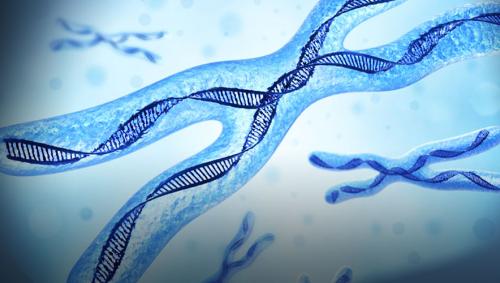In a first, scientists have completed the long-anticipated genome sequencing of male Y chromosomes, finally mapping the set of end-to-end human chromosomes.
The human Y chromosome -- one of the two human sex chromosomes -- has been notoriously difficult to sequence and assemble because of its complex repeat structure that includes long palindromes, tandem repeats and segmental duplication, said researchers from the the Telomere-to-Telomere (T2T) consortium, in the paper published in the journal Nature.
The T2T consortium, part of the Human Genome project, sequenced the entire human genome from a cell with XX chromosomes last year.

"Just a few years ago, half of the human Y chromosome was missing [from the reference] -- the challenging, complex satellite areas," said Monika Cechova, co-lead author on the paper and postdoctoral scholar in biomolecular engineering at University of California, Santa Cruz.
"Back then we didn't even know if it could be sequenced, it was so puzzling. This is really a huge shift in what's possible."
The Y chromosome is most commonly associated with individuals assigned male at birth, but may be found in others, such as intersex people.
The sex characteristics regulated by DNA on the Y chromosome are also not equivalent to an individual's gender identity.
Until now, the Y chromosome portion of the human genome has contained large gaps which made it difficult to understand variation and associated disease.
The researchers were able to achieve a gapless read of the Y chromosome due to advances in long-read sequencing technology and new, innovative computational assembly methods that could deal with the repetitive sequences and transform the raw data from sequencing into a usable resource.
While there are relatively few genes on the Y chromosome, the ones that are present are complex and dynamic, and code for important functions such as spermatogenesis, the production of sperm.
The end-to-end Y chromosome sequence is a hugely important resource for those studying human population evolution and drift.
This is because the Y chromosome is inherited from generation to generation in one group of genetic material, with very little recombination outside of that group, unlike the autosomes and genes on the human X chromosome which often recombine and share genetic material with each other.
Even within the Y chromosome, the genes are split into several regions, which are very different from each other in terms of content, structure, and evolutionary history.
Understanding rates of change on the Y chromosome and how to interpret this change are intriguing questions that will now be possible to study using the techniques developed in this paper to completely sequence human Y chromosomes.
It's been shown that people with Y chromosomes can lose some or all of that genetic material as they age, but scientists have never fully understood why this happens and the effects it may have.
The complete Y chromosome reference may help to illuminate this mystery.








